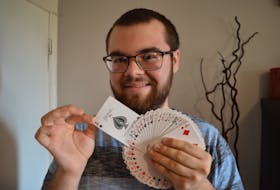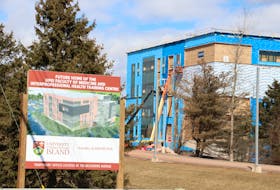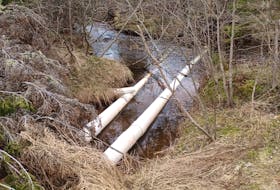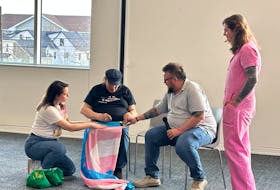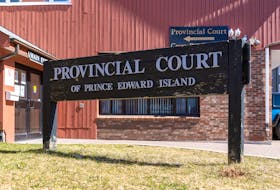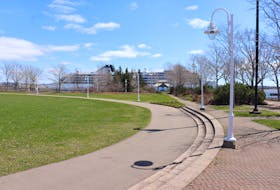Prince Edward Island is the only place in Canada to offer limited acceptance of Rob Casserley’s medical qualifications, which is why the record-holding, mysteriously gifted adventurer is here.
While the British-born-and-raised doctor struggles to cope with medical bureaucracy in this country, others have embraced his talents that few others possess.
It is more than just his medical skill giving him entry into one of the most elite clubs on Earth. It is, among other things, his ability to have sufficient mental clarity and manual control to whip out a camera at the right place and snap epic photos of people in wind-whipped, extreme cold conditions on mountains above 8,000 metres.
A lot of climbers have died where he takes awe-inspiring photographs.
Why his body, his genetic make-up, allows him to function better than most at the top of the world remains a mystery even in the face of his growing expertise in high-altitude medicine. It might be his ACE gene, but he’s not sure he ever wants to find out for sure.
“If I knew what it was, I probably wouldn’t do it,” said Casserley during an interview this week with The Guardian. “In the words of U2, ‘I still haven’t found what I’m looking for.’”
Casserley is a locum doctor in Charlottetown. His other job is guiding people to the top of Mount Everest. That would be 29,029 feet (8,848 metres) up from here, give or take a bit because of controversy on this point, such as including the snow and ice on top of the rock, or not.
He found his high-altititude ability first on Everest in 2003, but before that on Mount Kenya in 1995 while serving with the British army.
Casserley has now been to the Everest summit seven times. He holds a record as the first Westerner to twice double-summit Everest in one week, once in 2007, then again in 2010. Now he gets paid to guide there.
People wanting to get a taste of Everest without the summit can check out Casserley’s company Trek8848.com.
Two years ago he had to excuse himself from rowing across the Atlantic ocean. He had to leave his two-doctor rowing team to meet his commitment of helping people get to the top of Everest during the spring 2010 pre-monsoon Himalayan climbing season.
Good thing he did. He, along with Ang Namgel Sherpa and Thundu Sherpa, likely saved the life of experienced Himalayan climber Anita Kobold. She collapsed suddenly with no apparent pulse or breathing after coming down from the summit of Everest on May 26, 2010.
It isn’t about climbing up to the summit of Everest, it is all about safely climbing back down from the summit, says Casserley, echoing climbing lore.
His tandem cross-Atlantic row boat is for sale, by the way, at a discount price. Buyers get a desalinating water maker as part of the package but will have to stock the boat with food to last some three months.
Resupply en route will disqualify participants in the annual Woodvale Atlantic Rowing Race. For the 2009 edition that Casserley did with fellow rowing neophyte Doctor Stu Burbridge, it was from La Gomera, Canary Islands to Antigua.
Weather delayed the start into early 2010 and sent them off the ideal course, forcing Casserley to leave just 280 miles short, 73 days after starting, continuously rowing two hours on, then two hours rest.
Everest is almost easier, said Casserley.
Video - talking about his climbing life
“The prerequisites, from my perspective, of Everest are to have an open mind and to be psychologically strong where possible,” he said. “It’s a huge financial and time commitment.”
Often new climbers are established people with children, he has noted.
“That is a great strain on anyone’s ability to go and climb that mountain, so you have to be really passionate about wanting to do it.
“Anyone on Prince Edward Island can do it, because passion is not something that is geographically based or defined by how high you live or where you live. Physical fitness is not even a prerequisite. It helps but actually I would say that psychology is the most important thing.”
So is money, some $25,000 for bare-bones support.
Why, is the universal nagging question.
“Mallory said ‘because it’s there,’ “ said Casserley.
That would be British climbing hero George Mallory who was seen with Andrew Irvine on June 8, 1924, a few hundred metres from the summit. They were never seen alive again and speculation will forever remain if they reached the summit that year or not.
The first official climb, and remember, successful descent of Everest, was May 29, 1953, by Tenzing Norgay Sherpa and Edmund Hillary. News of their feat arrived in Britain on June 2 that year, Coronation Day for Queen Elizabeth II.
“We as a group of people are always aspiring to something bigger or better or to push our physical or psychological boundaries,” said Casserley.
“For me it still remains a credible achievement by any yardstick,” he says with a deferential chuckle. “I love being in Nepal. I love the life it gives you. I am in a very privileged position, and I acknowledge that and embrace it.
“It’s not just about the mountain, but about the whole package and what it has made me.”
He married last year, a cardiologist from Quebec. Casserley is leaving Prince Edward Island the end of this month to be with his wife and ask permission to summit Everest again this spring. He anticipates being back to P.E.I. often, as a locum doctor, likely this summer after a stint to sustain his British medical qualification and a climb with his wife of Mount Elbrus in Russia.
Prince Edward Island is the only place in Canada to offer limited acceptance of Rob Casserley’s medical qualifications, which is why the record-holding, mysteriously gifted adventurer is here.
While the British-born-and-raised doctor struggles to cope with medical bureaucracy in this country, others have embraced his talents that few others possess.
It is more than just his medical skill giving him entry into one of the most elite clubs on Earth. It is, among other things, his ability to have sufficient mental clarity and manual control to whip out a camera at the right place and snap epic photos of people in wind-whipped, extreme cold conditions on mountains above 8,000 metres.
A lot of climbers have died where he takes awe-inspiring photographs.
Why his body, his genetic make-up, allows him to function better than most at the top of the world remains a mystery even in the face of his growing expertise in high-altitude medicine. It might be his ACE gene, but he’s not sure he ever wants to find out for sure.
“If I knew what it was, I probably wouldn’t do it,” said Casserley during an interview this week with The Guardian. “In the words of U2, ‘I still haven’t found what I’m looking for.’”
Casserley is a locum doctor in Charlottetown. His other job is guiding people to the top of Mount Everest. That would be 29,029 feet (8,848 metres) up from here, give or take a bit because of controversy on this point, such as including the snow and ice on top of the rock, or not.
He found his high-altititude ability first on Everest in 2003, but before that on Mount Kenya in 1995 while serving with the British army.
Casserley has now been to the Everest summit seven times. He holds a record as the first Westerner to twice double-summit Everest in one week, once in 2007, then again in 2010. Now he gets paid to guide there.
People wanting to get a taste of Everest without the summit can check out Casserley’s company Trek8848.com.
Two years ago he had to excuse himself from rowing across the Atlantic ocean. He had to leave his two-doctor rowing team to meet his commitment of helping people get to the top of Everest during the spring 2010 pre-monsoon Himalayan climbing season.
Good thing he did. He, along with Ang Namgel Sherpa and Thundu Sherpa, likely saved the life of experienced Himalayan climber Anita Kobold. She collapsed suddenly with no apparent pulse or breathing after coming down from the summit of Everest on May 26, 2010.
It isn’t about climbing up to the summit of Everest, it is all about safely climbing back down from the summit, says Casserley, echoing climbing lore.
His tandem cross-Atlantic row boat is for sale, by the way, at a discount price. Buyers get a desalinating water maker as part of the package but will have to stock the boat with food to last some three months.
Resupply en route will disqualify participants in the annual Woodvale Atlantic Rowing Race. For the 2009 edition that Casserley did with fellow rowing neophyte Doctor Stu Burbridge, it was from La Gomera, Canary Islands to Antigua.
Weather delayed the start into early 2010 and sent them off the ideal course, forcing Casserley to leave just 280 miles short, 73 days after starting, continuously rowing two hours on, then two hours rest.
Everest is almost easier, said Casserley.
Video - talking about his climbing life
“The prerequisites, from my perspective, of Everest are to have an open mind and to be psychologically strong where possible,” he said. “It’s a huge financial and time commitment.”
Often new climbers are established people with children, he has noted.
“That is a great strain on anyone’s ability to go and climb that mountain, so you have to be really passionate about wanting to do it.
“Anyone on Prince Edward Island can do it, because passion is not something that is geographically based or defined by how high you live or where you live. Physical fitness is not even a prerequisite. It helps but actually I would say that psychology is the most important thing.”
So is money, some $25,000 for bare-bones support.
Why, is the universal nagging question.
“Mallory said ‘because it’s there,’ “ said Casserley.
That would be British climbing hero George Mallory who was seen with Andrew Irvine on June 8, 1924, a few hundred metres from the summit. They were never seen alive again and speculation will forever remain if they reached the summit that year or not.
The first official climb, and remember, successful descent of Everest, was May 29, 1953, by Tenzing Norgay Sherpa and Edmund Hillary. News of their feat arrived in Britain on June 2 that year, Coronation Day for Queen Elizabeth II.
“We as a group of people are always aspiring to something bigger or better or to push our physical or psychological boundaries,” said Casserley.
“For me it still remains a credible achievement by any yardstick,” he says with a deferential chuckle. “I love being in Nepal. I love the life it gives you. I am in a very privileged position, and I acknowledge that and embrace it.
“It’s not just about the mountain, but about the whole package and what it has made me.”
He married last year, a cardiologist from Quebec. Casserley is leaving Prince Edward Island the end of this month to be with his wife and ask permission to summit Everest again this spring. He anticipates being back to P.E.I. often, as a locum doctor, likely this summer after a stint to sustain his British medical qualification and a climb with his wife of Mount Elbrus in Russia.

